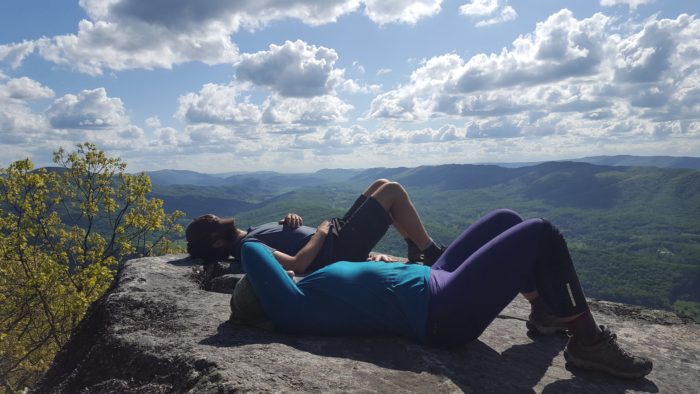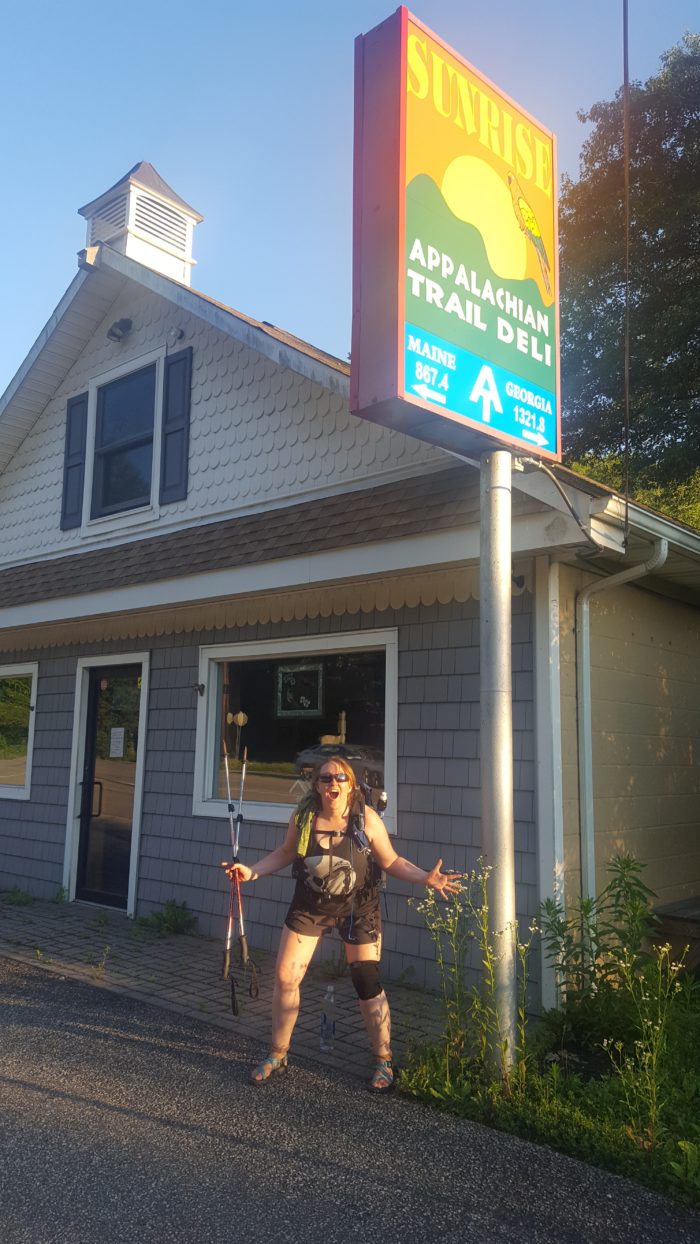From the Couch to the AT: In Pursuit of Trail Legs
Those who have done research on a long-distance trail have heard the prophecy of the “Trail Legs.” I always pictured myself starting with limp-noodle legs that became bionic, unstoppable masterpieces, catapulting me over any mountain with little-to-no pain. Trail Legs are the stuff of a fantasy or a science fiction novel, and in a way, they are just that: a fantasy.
Truly defined, having your Trail Legs means that you can walk all day, every day, and recover enough overnight to do it again the next day without a major injury. So, all you have to do is put one foot in front of the other, and your Trail Legs will magically appear one day, right? If only.
Here are some tidbits of advice from a long-distance section hiker who has had to acquire her trail legs three times, virtually off the couch, on the Appalachian Trail.
Slow and Steady Wins Katahdin
Unless you’re an experienced long-distance backpacker, you can’t know how your body will react to climbing mountains day in and day out. Instead of planning how far you are going to go each day from your couch, plan each day depending on how you feel when you stumble out of your sleeping bag in the morning. Your body will tell you when you need to stop each day. Listening is paramount.
A general rule is five to eight miles per day for the first two to three weeks. Even if you are in shape, your tendons need time to adjust. After that, your body will tell you the rule each day if you are listening.
Don’t ignore your body’s messages.
The Tortoise and the Hare
If you did not have the time or space to train before you step onto the trail, you will be slower than some other hikers. Age can play a factor in muscle acquisition and recovery as well. This is where Hike Your Own Hike comes into play.
You may get to a shelter early in the afternoon and watch hordes of hikers pass you. You may have fallen in with people you enjoy who want to continue past your comfortable limit. Let them go. You will see them again if they don’t injure themselves going too fast and have to go home early. Your ego will be tested if you are competitive.
Egos are heavy and hard on your knees.
Mileage Madness
It’s a real thing. If there’s anything that people who hike long distances have in common, it’s the ability and need to give themselves personal, lofty goals. Giving yourself a daily mileage goal can become almost maddening and obsessive. It can also cause injury.
This mileage madness monster inside can cause you to miss out on the serendipity that exists on the trail. If your heart strings are telling you to stop and smell the rhododendrons, then do it! And don’t beat yourself up if you don’t reach your goal one day. The only one that really cares is you.
If you stay on the trail, you will get there.
Injury Issues
Injuries are almost as commonplace as rain showers on the Appalachian Trail. Just because you have your Trail Legs, doesn’t mean that you will never have pain or injury again. Your body will change with the terrain, and change is uncomfortable.
From blisters and trench foot, to knee issues and plantar fasciitis, almost everyone is dealing with some issue out there. Many long distance and thru-hikers try to mitigate injuries on the trail. The question becomes: when and how long should I rest? Sometimes, people wonder if it’s bad enough to end their hike.
Preparation and prevention is key. If you know you’ve had a sports-related issue before, plan on that injury rearing its head again. Bring the knee brace if you’ve needed it in the past. Stretch during each break; put your legs up on a shelter wall; give yourself a lotion foot massage in town; take blister care super seriously; RICE when you get a chance; soak your feet in a stream if it’s a warmer day; drink water; and rest. Lighter gear is easier on your joints and back. Especially, if you are not in shape.
You should rest up to twice a week for the first month, and it’s safe to plan a nero or zero at least once a week for the first two to three months. If you need to take two in a row, do it, even if you have to head back to the trail and stay in a shelter to save cash.
If a physical malady is a concern, take the time to fix the machine.
It’s the only body you have. Treat it as such.


The Bottom Line
After going through this process three times as a long-distance section hiker, I can assure you that as cathartic as watching YouTube stars, reading articles, and pouring over books about the AT is, this research will not help much in understanding the acquisition of Trail Legs. What happens to our bodies on a thru-hike or a long distance section hike is very individual and depends on a number of factors.
The bottom line is that you need to be the facilitator of your body and mind on the trail, and the ultimate test will be during the acquisition of your Trail Legs. Your body and mind won’t always be in agreement, but it is important to take care of both. Getting your Trail Legs will be a continuous process over the rocks, tree roots, and vistas of your journey. This requires patience, compassion for yourself, and persistence.
There are not many experiences out there that will teach you as much about yourself as a long distance or thru-hike. I know I’m not done learning.
This website contains affiliate links, which means The Trek may receive a percentage of any product or service you purchase using the links in the articles or advertisements. The buyer pays the same price as they would otherwise, and your purchase helps to support The Trek's ongoing goal to serve you quality backpacking advice and information. Thanks for your support!
To learn more, please visit the About This Site page.








Comments 5
Preach! An ego is definitely a heavy thing to carry around. Keep it up, Sunrise and do so at your own pace. Proud of you and miss you, friend!
Thank you. Well said and something I needed to read. As a section biker and wanna be thru hiker, I have learned through pain, the need to listen and not set arbitrary limits to feel accomplished on a given day. Thank you.
“Egos are heavy and hard on your knees”. Love it! And so true. Great post!
I so agree about the resting. I was always happiest when I didn’t care how far I went in a day. Some days I did better than expected because I listened to my body and I took a nap in my hammock in the middle of the day.
Wisdom from the trail, good stuff.